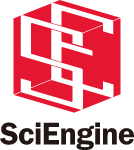Atomic physics at the HIAF under extreme conditions: QED effects from strong Coulomb fields to beyond Schwinger limits
Abstract
<p indent="0mm">The high-intensity heavy ion accelerator facility (HIAF) is one of the major large-scale research facilities at the nuclear science center planned for Huizhou City in Guangdong Province. HIAF and its experimental terminals can be used to realize unprecedented research progresses in nuclear physics, atomic physics, materials, high-energy-density physics, and applications related to heavy ion beams such as cancer therapy, material modification, and radiobiology. In addition, they will provide excellent possibilities for atomic physics to investigate the quantum electrodynamics (QED) effects from strong electromagnetic fields to super-critical electromagnetic fields beyond the Schwinger limit. Starting from modern atomic spectroscopy based on the accelerator technology and in combination with the beam characteristics of the HIAF, this paper discusses the cutting-edge research topics that could be performed at HIAF and the upgrades to HIAF that could be implemented in the near future. The research fields include the QED effects in super-strong fields, parity nonconservation in highly charged ions, few-body processes in relativistic collisions, and testing the locality of matter waves of massive particles. This paper also discusses the possibility to perform laser spectroscopy with respect to radioactive ions. Furthermore, we believe that the latest high harmonic extreme ultraviolet (XUV) laser technology can be combined with HIAF for realizing high-precision measurements.</p>









